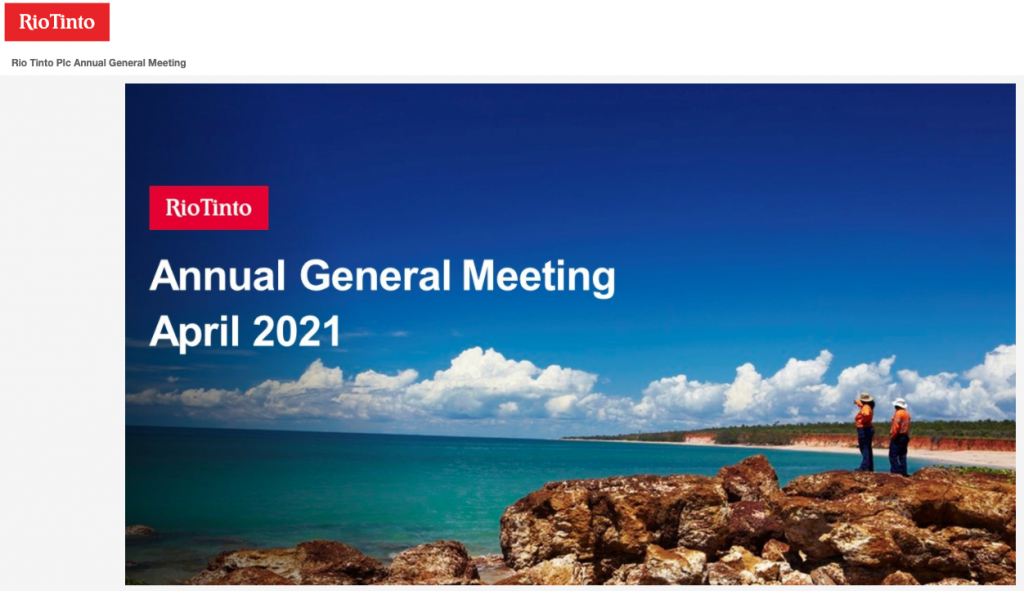
The Rio Tinto AGM held on the 9th April 2021 was a virtual webinar due to Covid 19 restrictions. Only 35 people were participating. The technology placed Rio Tinto firmly in control of the content of the meeting and most questions from shareholders had been presubmitted ( 48 hours before the AGM) .These were read out by a staffer, devoid of the emotional weight felt by those whose concerns were expressed.
The AGM provides an opportunity for communities and indigenous peoples to raise issues and exchange with the Board of Directors when Rio Tinto mines around the world are causing harm, abusing human rights and/or destroying indigenous lives and livelihoods. Support for communities who want to raise their issues is advanced by London Mining Network who annually co-ordinate community representations at the AGM. This year ‘s AGM was overshadowed by Rio Tinto’s destruction of the Juukan Gorge
After the Gorge Can Rio Tinto be Trusted?
Andrew Lees Trust (ALT UK) and Publish What You Pay Madagascar (PWYP MG) attended the AGM to raise questions and issues about the QMM mine operation in southern Madagascar. Specifically about its contamination of local lakes and waterways around the mine with elevated levels of uranium, thorium and lead, well in excess of WHO guidelines for safe drinking water. This is important since the majority of villagers living next to the mine draw drinking and domestic water from these natural sources, and have no access to alternative water sources.
The recording of the AGM can be listened/watched online at this address : https://edge.media-server.com/mmc/p/mc2odwhx
The questions on Madagascar appear here (time lines) :
46.21 – 50.38 on uranium levels
51.03 – 56.35 on providing safe drinking water
1.42.25 – 1.46.00 on health issues
The AGM and observations, below, can be downloaded as a PDF document here.
QUESTIONS and ANSWERS: –
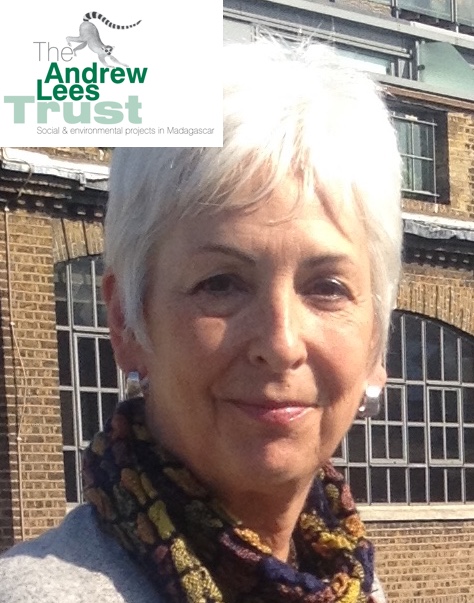 Yvonne Orengo of the Andrew Lees Trust (ALT UK)
Yvonne Orengo of the Andrew Lees Trust (ALT UK)
“You say that company won’t be the same after Juukan Gorge, so why is Rio Tinto/QMM currently telling communities and stakeholders in Madagascar that elevated levels of uranium in water downstream of the mine, 50 times higher than WHO safe drinking water levels in some places, is all “naturally occurring”? You have no evidence to make the claim and it contradicts existing data including QMM’s that shows QMM is contaminating waterways with elevated heavy metals and uranium in its discharge waters. Why do you continue to obfuscate the findings and mislead traditional communities and your shareholders? How does this build trust?”
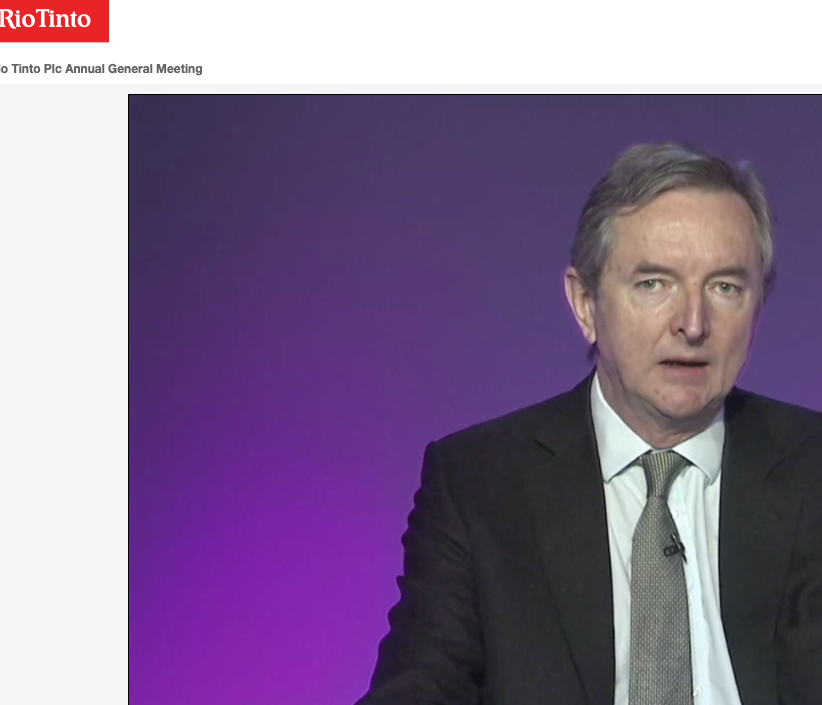 Simon Thompson, Chair of Rio Tinto, replied:
Simon Thompson, Chair of Rio Tinto, replied:
that QMM is a mineral sands project and that the sands mined there have a low level of naturally occurring radiation. No chemicals are added during the processing, just water. But the process of dredging the sand results in some sand and other sediment being accumulated in the water. The company maintains the water table of the mining ponds below the level of the water in the surrounding environment so it cannot flow into the environment, but periodically the company has to release water from the mine into the environment. Before doing so, water is put in settling ponds so that material separates out, and before release the water is sampled to make sure that the quality is as good as the water above the mine. Third party audits have been carried out four times and a fifth audit is in process but has been delayed because of COVID restrictions, but efforts are being made to make progress with the study and it will be publicised and shared once it has been peer reviewed. There have been temporary exceedances in aluminium and in cadmium and for that reason the company has stepped up its water management programme and there is a team working on this to ensure there is no recurrence. Rio Tinto has shared all of its sampling of water quality with Andrew Lees Trust and other stakeholders including local communities, mayors, civil society organisations and so on Rio Tinto will continue to work hard to improve the quality of water management on the site to ensure they do not have exceedances in the water that is released to the environment.
Observations about Rio Tinto’s response:
Note 1: Rio Tinto did not answer the question or the one we asked about always saying” we don’t use chemicals” when asked about QMM water contamination (see below). It is potentially misleading, as the science is complicated and the contaminants in question are not visible, as is often the case with chemical toxicity. Rio Tinto is not explaining fully when it says “dredging the sand results in some sand and other sediment being accumulated in the water”. Churning of the sands, the dredging process, actually results in the concentration of uranium in the mining basin. This has been demonstrated using QMM’s own water data and was reported by Swanson in her Memo 2020, and as is consistent with mineral sand extraction. QMM discharges elevated levels of uranium, thorium and lead in its wastewater from the mining pond. Elevated uranium levels have also been identified in waters around the mine 50 times higher the WHO safe drinking water guidelines of 0.03 mg/L, which is important because local people draw their drinking water from these natural sources.
Dr Emerman observes that new uranium measurements included in the QMM Wastewater report 2021, that were not available to Swanson for her 2019 report, clearly show the detrimental impact of the QMM mine on water quality, including numerous elevated measurements of uranium downstream from the mine (a lot of data are from 2015 and should have been provided under the legally binding agreement for Rio Tinto to deliver all relevant QMM data to Swanson for her study). The last four elevated measurements were made after the JBS&G study 2020, which reported that all of the elevated uranium had gone away (“…were within the relevant WHO guidelines for drinking water quality.” QMM 2020).
Note 2: it is not correct to say Anosy has low radiation levels. The study by independent radioactivity specialist Swanson shows background radiation of 1.6mSv/y in the Anosy region[1], higher than the average for elevated areas globally, but lower than some where levels are extremely high – such as Kerala (India) and Ramsar (Iran), see Swanson 2019. It should also be noted that for over two years Rio Tinto has claimed “high” levels of “naturally occurring” uranium in the region in response to questions about QMM’s local water contamination (Rio Tinto AGM 2018 and 2019).
Note 3: Rio Tinto does not always manage to keep its QMM mine waters below the local water table levels as claimed. There are at least two overflow events reported around the QMM mine where mine waters have overtopped the QMM mine tailings dam, as well as other reported incidents of when the mining pond water levels have been higher than the surrounding lakes – i.e., above the levels set to ensure no leakage or outflow from the mining basin into the surrounding waters (as per reports shared with ALT UK by Rio Tinto/QMM).
Note 4. There is no evidence provided, and Rio Tinto admits that it cannot guarantee that the QMM settling ponds system is successfully removing contaminants (uranium, thorium and lead) from the QMM mine discharge waters before they are released into the environment.
Note 5: Rio Tinto had been criticised by Swanson (2019) for the “unacceptable” level of radioactivity monitoring around the QMM mine, in particular for the lack of monitoring of ingestion pathways given the reliance on natural sources of water and land resources for local people’s survival. Aside from the baseline study, there were two interim reports by the INSTN in Madagascar (2012, 2014), which focused largely on worker’s exposure. A further study was undertaken by Rio Tinto only in 2018 and after ALT UK raised questions about QMM radioactivity at the Rio Tinto 2017 AGM and instigated inquiries at a meeting with the CEO in May that year. A new external radioactivity study was promised in a meeting with ALT UK, PWYP MG, UK and Friends of the Earth in 2019 following the findings of the ALT UK commissioned Swanson independent radioactivity report, questions arising, and the continued lobbying of the company around water concerns and Swanson’s recommendations. Numerous analyses of uranium and other contaminants in water around QMM have been produced by ALT UK – and have either been ignored or dismissed by Rio Tinto without any scientific grounds.
Note 6: the company admits “There have been temporary exceedances in aluminium and in cadmium”. What information is enabling the company to say that these exceedances are only “temporary? ” When will this data/ information be shared? Rio Tinto fails to mention that these exceedances are a direct breach of Malagasy law and should be subject to the Polluter Pays principle as prescribed in Madagascar’s Decret MECIE.
According to the QMM wastewater discharge report, there has been nothing temporary about these exceedances:

Note 7: To our knowledge, until recently (March 2021) there has been no QMM water data sharing with communities, mayors, or civil society. Data sharing of QMM’s wastewater report 2021 only recently happened, and only after repeated requests and pressure from ALT UK, PWYP UK and MG for these data to be released. The data were promised in July 2020. ALT UK/PWYP only received it in March 2021, with no opportunity to analyse the data before the report’s dissemination, which would have enabled informed engagement by local civil society. ALT UK has commissioned an independent analysis of the 2021 QMM wastewater report and will share this, as per all its other studies and analyses, as soon as possible, on our website here.
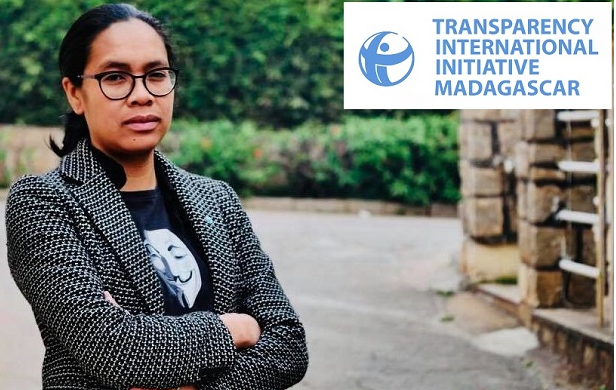 Ketakandriana Rafitoson of Publish what You pay Madagascar (PWYP MG) asked :
Ketakandriana Rafitoson of Publish what You pay Madagascar (PWYP MG) asked :
When it comes to the rural poor of the Anosy region in southern Madagascar, those very people targeted to be “lifted out of poverty” by the presence of the QMM mine, villagers tell us that their water has been polluted and degraded over the last ten years since the QMM mine started its operation. Local people are reliant on natural water sources for survival. All the existing water data and studies point to contamination and the detrimental effect of QMM operations on the local waterways and water quality of the region. So, how does Rio Tinto/QMM explain and justify its reluctance and delay to address safe drinking water needs of the mine affected communities? When will Rio Tinto concede the QMM mine is contaminating waterways around the mine and provide safe drinking water to the affected communities, made up of poor fisherfolk and rural producers living on less than $1.5 per day. Why the delay?
and
We have been researching the QMM mine’s contamination of local waterways in Anosy for over four years with the help of an expert hydrologist and a radioactivity specialist and we want Rio Tinto to explain why QMM is insisting to the affected communities and civil society, and why Rio Tinto tells its shareholders, that it ‘uses no chemicals’ for extraction at the QMM mine, only water. It leads with this whenever asked to answer questions about QMM’s contamination of water with elevated levels of uranium and lead, cadmium and aluminium. Why is RT not explicitly admitting what they know: that QMM’s extraction process (churning mineral sands) causes the elevated levels of uranium and heavy metals in its mining pond and discharge wastewaters that are the subject of the inquiry? Why is the company apparently trying to take advantage of the lack of scientific understanding of the situation in its audiences to divert attention from the facts, our very real concerns about water contamination, and our demands for safe drinking water?
 Simon Thompson, Chair of Rio Tinto, replied:
Simon Thompson, Chair of Rio Tinto, replied:
that he had partially answered the second question in response to Yvonne earlier. He said Rio Tinto were not trying to confuse people. They were trying to be “as transparent as we can be” and this is why they engage with mayors and CSOs to ensure they understand what they are doing on safety and water management. The data from the wastewater study did show elevated levels of aluminium and cadmium but not uranium and lead But, “we acknowledge a problem of access to fresh water across the whole of southern Madagascar,” which is partly a function of drought and high population growth, he said. Population doubles every twenty years in that part of Madagascar, and access to water is affected by slash and burn agriculture, which also affects water quality flowing into rivers and there are endemic health risks from waterborne diseases. Rio Tinto acknowledges there is an issue of access to fresh water and did invest with the World Bank to improve access to water and sanitation including to put twenty wells into local communities and is improving waste disposal and sewage treatment to improve the quality of water, and Rio Tinto continues working with the government to improve water in the Ft Dauphin and two other local municipalities to improve access to fresh water. But slash and burn and high population growth are associated with poverty, and although the mine will not solve everything, it is providing high paid jobs and technical support to local municipalities and the government to help.
Observations about Rio Tinto’s response:
Note 8: Blaming the rural poor and their traditional agricultural practices for the lack of “fresh water” access in the Anosy region is disingenuous, to say the least. The ‘othering’ of the rural poor is, however, consistent with the company’s track record, narrative, and treatment of villagers. It was used to push the mine project through in the nineties by claiming all the forests would be destroyed by local people’s slash and burn agriculture within twenty years. This has proved completely erroneous, since the main parcels of littoral forest in Anosy are still largely intact more than two decades on. The largest loss of forest area in the Anosy region is caused by QMM’s mining operation. The rural poor in Anosy have been accused by QMM of failing to accept the company’s “gifts of development” whereas, in reality, those benefits they have a right to enjoy, such as clean drinking water access, are denied them by QMM, who instead contaminates their natural drinking water sources. In this regard, to use the suffering of the rural poor and the government’s inability to meet potable water targets in order to deflect from QMM’s water contamination – and to blame drought, which is currently causing famine, suffering and starvation to over a million people in the neighbouring, dry Androy region, is quite shameless.
Note 9: In terms of transparency Rio Tinto promised to communicate the results of the Swanson 2019 radioactivity report to local people. The commitment was made by Rio Tinto in 2018 in accordance with ALT UK’s framework agreement for the study, but has seen no advance in the promised processes of engagement, despite repeated requests for over two years. Covid will no doubt be used to explain another year of inaction. However, QMM can find time and ways to communicate its own wastewater report – just ahead of the Rio Tinto 2020 AGM, and presumably to assure shareholders it is meeting ESG expectations. As is usually the case, QMM is controlling the narrative with its own data interpretation and information.
Note 10: The mine is required to meet environmental discharge limits to satisfy its mining permit, rather than safe drinking water limits. The 2021 QMM wastewater report clearly shows levels of uranium and lead that are in excess of WHO drinking water guidelines in QMM discharge water. Rio Tinto concedes that QMM process water may have higher concentrations of minerals and metals than is deemed safe by drinking water standards (1). It states that QMM therefore retains its process water on site to allow these materials to settle out to the bottom of a series of holding ponds “maintained for this purpose before release”. The company claims “This ensures water leaving the site into adjacent wetlands and streams is under permitted limits”. However, WHO safe drinking water guidelines are exceeded at points of water collection around the QMM mine, for example, at station WS0502, which is cause for concern (see also Note 4 above). The majority of people living around the mine draw their drinking water directly from QMM impacted lakes and waterways, as there are no alternatives. This raises questions about which limits should apply. For example, Madagascar has established a limit for lead for discharge into the environment (0.2 mg/L) and which is higher than drinking water limits. However, the Malagasy Ministry of Health DECRET N° 2003-941 of 09 September 2003 regarding water destined for human consumption recognises lead to be toxic over 0.05 mg/L. The Malagasy government has not yet established a legal chemical (mg/L) limit for uranium levels for discharge into the environment. This failing is not a licence for QMM to discharge any amount of concentrated radionuclides (uranium and thorium) into the environment. Furthermore, Rio Tinto obligates itself to meet international standards that are stricter than local standards
[1] Rio Tinto letter to the group, February 2020
Note 11: It is interesting to hear Rio Tinto talk about their investments in water provision with the World Bank and the Malagasy government, because one of the main reasons why Rio Tinto has refused to provide safe drinking water to QMM mine affected communities in Anosy is because they say this is the remit of the state, not QMM. Malagasy water policy states clearly that foreign companies working in Madagascar are expected to contribute to achieving national potable water targets. It should also be noted that most of the 20 community wells RioTinto/QMM helped fund were placed in Ilafitsignana for the Permanently Affected People (PAPS), those who were displaced from their land and homes at the start of QMM’s project more than a decade ago. This village is nowhere near the Mandena mine site where the communities are drawing their drinking water from the lakes around the QMM operation, and where they have requested and urgently need access to clean drinking water. Communities in Mandena report that their drinking water has degraded in quality over the last ten years and attribute the negative changes to the presence of QMM mining operations.
 Yvonne Orengo of the Andrew Lees Trust (ALT UK)
Yvonne Orengo of the Andrew Lees Trust (ALT UK)
“We are getting the same answers to the questions we have been asking since 2019 despite significant amounts of studies and data that has been provided to you that show there is a serious concern and cause for concern about water quality around the QMM mine. There is no evidence that you have been able to provide to us for over more than two years to show that the QMM settling ponds are effective at removing heavy metals and uranium. This (can) mean severe health impacts, e.g. uranium: kidney damage, neurological diseases, multiple illnesses, and lead: development of children’s brains that can have a generational impact. Let’s be clear: this is not about general access to water in the region. It is It is nothing to do with ‘tavy’ (slash and burn agriculture) drought or population growth. It is specifically related to QMM contamination of waterways. … given the levels of poverty you refer to and challenges the poor are facing, I repeat Ms Rafitoson’s question: How can Rio Tinto justify not providing safe drinking water to the affected communities?”
 Simon Thompson, Chair of Rio Tinto, replied:
Simon Thompson, Chair of Rio Tinto, replied:
Rio Tinto accepted it had not made as much progress on this as over the last twelve months as had been hoped, because of the pandemic. The company had listened to Yvonne and others when they raised these concerns, and as a result that is why the fifth study of water quality and radiation risk had been launched in December 2019. Some progress was made before the pandemic struck, but not as much as the company had hoped. That process has been delayed but sampling is now getting back on track. This further study will be peer reviewed and made public. All data will be shared with the external advisory group, local communities, mayors and CSOs. He said that Yvonne would soon be having a meeting with Sinead (Kaufman), who is taking over responsibility for this area. “We recognise we have more work to do to address the concerns that you raise,” he said.
Observations about Rio Tinto’s response:
Note 12: Since May 2020ALT UK/PWYP MG/UK group repeatedly requested a meeting to follow up on outstanding water data and radioactivity questions with Rio Tinto that were raised in 2019. There was no response to these requests, nor to the group’s March 2020 correspondence or the two reports submitted to Rio Tinto in 2020 (community perceptions and analysis of the JBS&G water report) for the company’s engagement and discussion. QMM failed to provide a representative to attend a Tana meeting in December 2020 with PWYP MG about community concerns. Our group finally received an invite to meet with the CEO of Minerals only after PWYP UK raised the QMM issues at Rio Tinto’s annual Sustainability meeting in February 2021, in front of other international NGOs. Other invitations started to arrive, just weeks ahead of Rio Tinto’s April AGM.
Note 13: During all these delays and absences, QMM continues to contaminate waterways and local people have arguably experienced more than a decade of detrimental impact on their local natural water supplies.
DEMANDS AND EXPECTATIONS
Andrew Lees Trust (ALT UK) Publish What You Pay Madagascar (PWYP MG) are part of a group which also includes Publish What You Pay UK, and in which Friends of the Earth (England, Wales & N Ireland) has participated. Friends of the Earth’s ex-CEO continues his involvement in the group. The group has raised questions about water contamination and radioactivity around Rio Tinto’s QMM mine in southern Madagascar, as well as related environmental governance issues in the Anosy region, since 2018. This group has been advocating the provision of safe drinking water to affected communities for the last two years.
Given the unsatisfactory statements made at the Rio Tinto 2021 AGM (April 2021), there is very low expectation for any shift in the company’s position, which has remained steadfastly in denial of any impact of the QMM mine on water quality and a consistent refusal to address safe drinking water needs for the mine affected communities in Mandena.
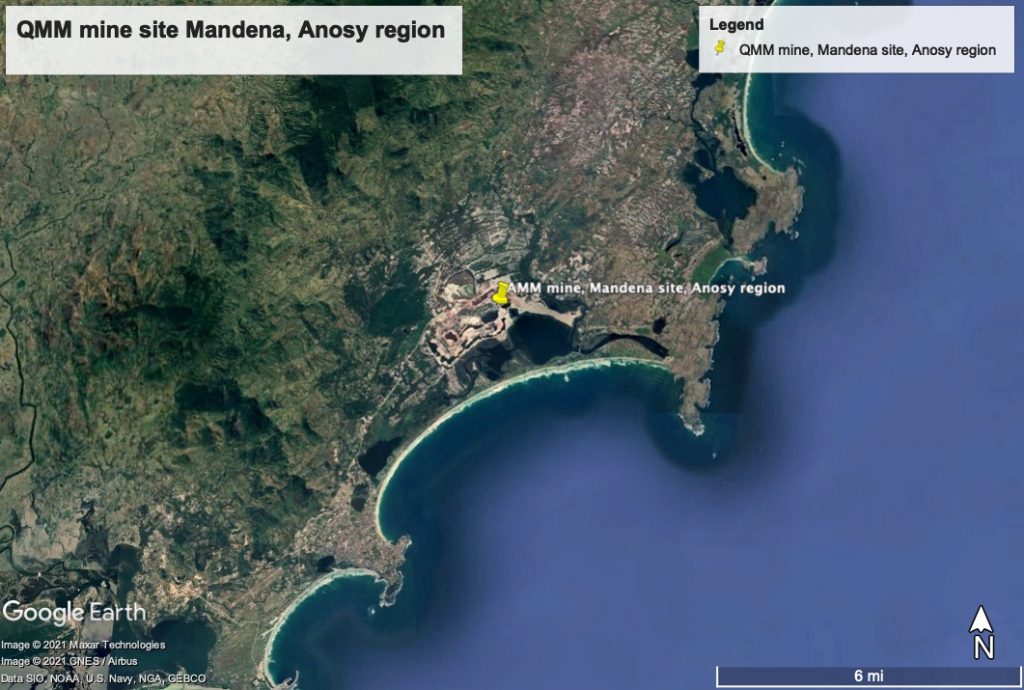
[1] The International Atomic Energy Agency (IAEA) dose limit for the general public is 1 mSv in a year above the natural background (IAEA 2018).

Pingback: Fishfolk protest Rio Tinto mine – Friend Search Blog
Pingback: Os peixes protestam contra a mina Rio Tinto | Blog Ambiental
Pingback: Fishfolk protest Rio Tinto mine - Aron Health
Pingback: Fishfolk protest Rio Tinto mine - GWC Mag
Pingback: Fishfolk protest Rio Tinto mine - All Health Books
Pingback: Des pêcheurs protestent contre la mine de Rio Tinto